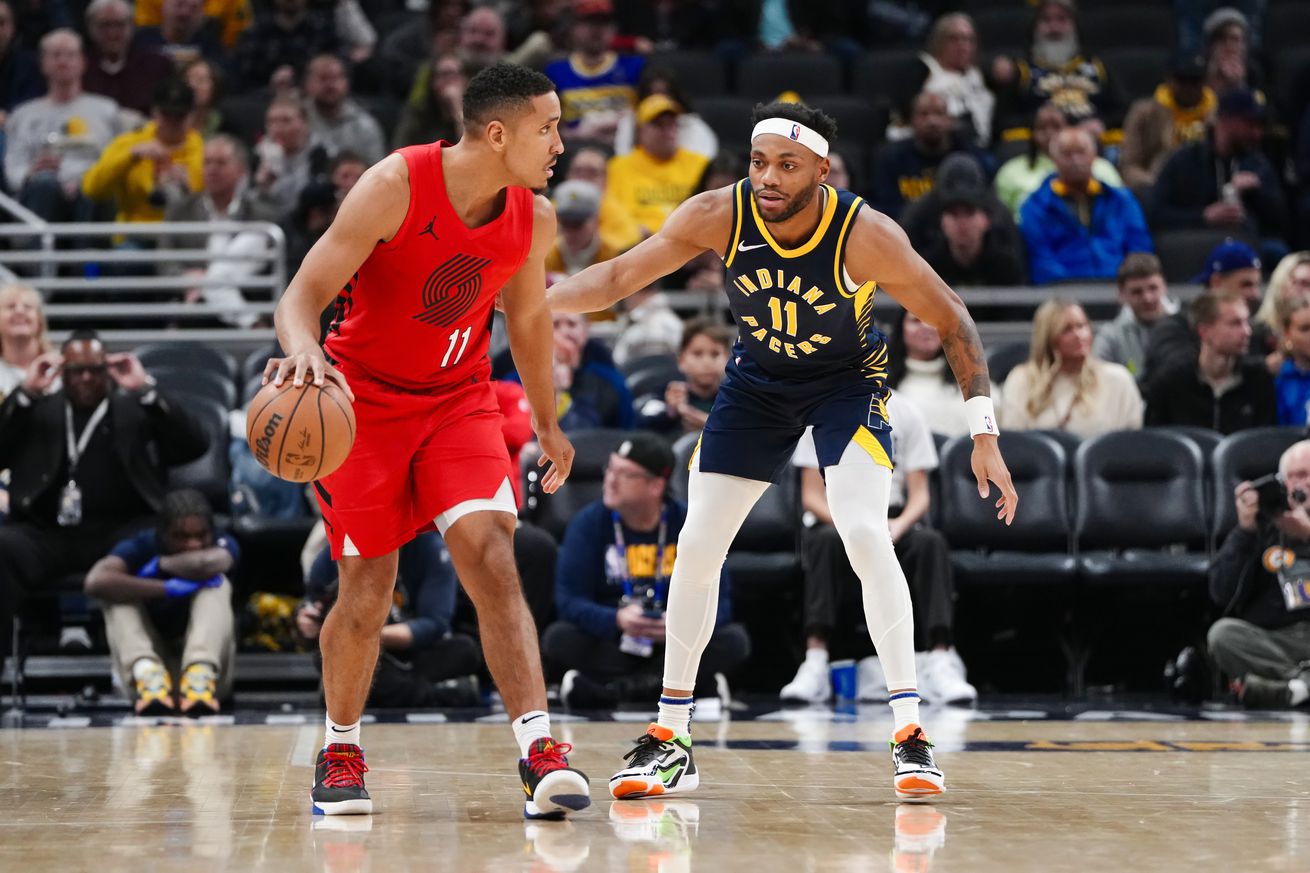Photo by Dylan Buell/Getty Images
The 2024 NBA trade deadline will tell us how far teams can actually extend the initial returns on some of their recent transactions.
As time ticks down towards the 2024 NBA trade deadline, I’ve been thinking a lot about a red paperclip.
More specifically, I’ve been reminded of the loose parables around and inspired by the 2005 early internet saga of Kyle MacDonald, a Canadian blogger “who traded his way from a single red paperclip to a house in a series of fourteen online trades over the course of a year,” as the tale is described by Wikipedia.
Over the last few months, I’ve been describing star trade returns in my head as “reverse paperclip” trades, where instead of going from a single office supply to a Ferrari, teams are instead trading out their sports cars to try and get back assets they can then showcase and flip into more assets over the internet.
It all started with the Washington Wizards, who sent Kristaps Porzingis to the Boston Celtics and acquired Tyus Jones, Mike Muscala and Danilo Gallinari, hoping to showcase all three in return for more assets on their carnival-ball team. They already flipped the latter two into two second-round picks for taking on Marvin Bagley, but have appeared to soften their hopes to showcase Jones to get a first by Thursday’s deadline, instead reportedly becoming more open to swapping him out for the paperclips of NBA team building: more second-rounders.
Then the Portland Trail Blazers flipped Damian Lillard for Jrue Holiday, Deandre Ayton, Toumani Camara, one Milwaukee first-round pick and two pick swaps. But they hoped to add to their haul by flipping Holiday for more picks, which they then got from… those same Boston Celtics, for Robert Williams, Malcolm Brogdon and two more first-round picks, with the widespread expectation being that they would then showcase Williams and Brogdon for trades to contenders. Williams, unfortunately, ended up needing season-ending knee surgery, but there have still been rumors they may flip him by tomorrow, while reports are that it’s “unlikely” they will trade Brogdon.
The Toronto Raptors offered us the most recent example, trading Pascal Siakam to the Indiana Pacers for three first-round picks and Bruce Brown, with the oft-rumored reasoning for doing the deal weeks before the deadline being that they hoped they could later flip Brown for “a first round pick and a quality player,” before later appearing to publicly drop that to just the first-round pick, and now veteran insider Marc Stein postulated in his latest Substack dispatch that they may ultimately not be able to get a first-rounder for him by the deadline at all.
There is context to all these situations, of course. Brogdon has publicly lobbied to remain in Portland and has embraced playing for head coach Chauncey Billups, for example. But with so many teams desperate to make upgrades — like the Los Angeles Lakers and Dallas Mavericks — being so limited in picks they can trade at this deadline due to previous win-now deals, it does appear that this “acquire and showcase” idea these teams tried may not get them or others the added hauls they were hoping for when initially making these early deals with the hope that added time would allow them to extend the asset packages they received in the initial transactions.
Will they have to lower their asks to move these players to avoid losing them down the line for less, or potentially nothing at all? Or will some contender get desperate and give up the first-rounders they were originally hoping to flip them for? It’s something that this writer will certainly be watching for over the next 24-ish hours.
Still, every deadline is different in terms of which teams have picks available and where they’re at in their team lifecycles, so maybe the viability of this strategy can’t be fully judged just based on this one year. And we certainly can’t fully evaluate the effectiveness of this tact as an initial trade return extender until tomorrow’s Feb. 8, 3 p.m. ET deadline, if then.
But if these teams can’t get what they want for the players they hoped to use for the NBA equivalent of flipping houses by then, it will be interesting to monitor if this trade trend continues moving forward, or if teams find new archetypes of star trades to try next time around.













